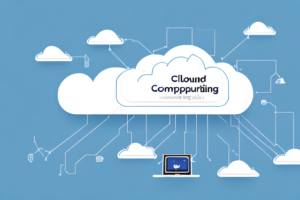Appliance-Only SDWAN Deployment vs Software-Defined SDWAN Deployment
8 min read
Two networks
Enterprises are always on the lookout for ways to optimize their network infrastructure for better performance and flexibility. One of the ways to achieve this is by deploying a Software-Defined Wide Area Network (SDWAN) solution. But the question is, what’s the best way to implement SDWAN technology? Should an enterprise deploy Appliance-Only SDWAN or Software-Defined SDWAN? This article aims to provide a comprehensive comparison between the two approaches to help enterprises make an informed decision on what’s best for their network infrastructure.
Understanding the Basics of SDWAN Deployment
SDWAN is a technology that separates the control and data planes of a network. It allows for centralized network management and can optimize WAN performance through the intelligent routing of traffic across multiple connections, such as MPLS, broadband, or cellular networks. This technology enables simplified network management, faster deployment, and increased bandwidth efficiency compared to traditional WAN solutions.
One of the key benefits of SDWAN is its ability to provide secure connectivity to cloud-based applications. With the increasing adoption of cloud services, traditional WAN solutions can struggle to provide the necessary security and performance. SDWAN can help to overcome these challenges by providing secure and reliable connectivity to cloud applications, regardless of their location.
Another advantage of SDWAN is its ability to support a range of deployment models, including on-premises, cloud-based, or hybrid solutions. This flexibility allows organizations to choose the deployment model that best suits their needs, whether they are looking to reduce costs, improve performance, or increase agility.
Pros and Cons of Appliance-Only SDWAN Deployment
Appliance-Only SDWAN Deployment involves deploying physical devices at branch offices or data centers. These appliances come pre-configured with specific software and configurations that ensure they operate correctly. One advantage of Appliance-Only SDWAN Deployment is that it is straightforward to configure, and IT teams do not have to spend significant time and resources configuring the devices. Another advantage is that there are no ongoing software licensing fees. However, as the enterprise network grows, physical appliances can become a challenge to manage. Configuration changes, software maintenance, and firmware upgrades can be time-consuming and challenging to execute, which can lead to extensive network downtime.
Another disadvantage of Appliance-Only SDWAN Deployment is that it can be costly to deploy and maintain physical devices at every branch office or data center. This can be especially challenging for small and medium-sized businesses that may not have the budget to invest in multiple physical appliances. Additionally, physical devices can be vulnerable to physical damage or theft, which can compromise the security of the network. As a result, some enterprises may opt for a hybrid approach that combines physical appliances with virtual SDWAN solutions to achieve a balance between cost-effectiveness and network performance.
Pros and Cons of Software-Defined SDWAN Deployment
Software-Defined SDWAN Deployment, on the other hand, involves deploying virtual appliances or software on existing network devices or servers. The software deployment approach provides an affordable and scalable network solution. It simplifies network management tasks and allows for more flexibility in configuring the network. Software licensing fees usually come with Software-Defined SDWAN Deployment, which can be costly in the long run. Another potential disadvantage is that virtualized environments can impact the device performance and network capacity over time.
One of the advantages of Software-Defined SDWAN Deployment is that it allows for better network security. The software can be configured to automatically detect and respond to security threats, such as malware or unauthorized access attempts. This can help prevent data breaches and other security incidents.
However, one potential disadvantage of Software-Defined SDWAN Deployment is that it may require additional training for IT staff. The software and virtual appliances used in this approach may be unfamiliar to some IT professionals, which could lead to longer deployment times and increased costs for training and support.
Key Differences Between Appliance-Only and Software-Defined SDWAN Deployment
One of the key differences between Appliance-Only and Software-Defined SDWAN Deployment is the level of control and customization each provides. Appliance-only SDWAN systems generally provide less flexibility in terms of making changes to the system. In contrast, software-defined SDWANs allow for greater customizability and adaptability to meet specific enterprise network requirements. Additionally, Appliance-Only SDWANs are typically hardware-based solutions, while Software-Defined SDWAN solutions are software-based, making them easier to integrate into virtualized environments.
Another important difference between Appliance-Only and Software-Defined SDWAN Deployment is the level of security they provide. Appliance-only SDWANs often have limited security features, which can leave the network vulnerable to cyber attacks. On the other hand, software-defined SDWANs offer advanced security features such as encryption, firewalls, and intrusion detection systems, which can help protect the network from potential threats.
Furthermore, Appliance-Only SDWANs are often limited in terms of scalability. As the network grows, it can become difficult and expensive to add more hardware appliances to support the increased traffic. In contrast, software-defined SDWANs can easily scale to meet the needs of the network by simply adding more virtual instances of the software. This makes it a more cost-effective and efficient solution for enterprises with rapidly growing networks.
Factors to Consider Before Choosing Between Appliance-Only and Software-Defined SDWAN Deployment
The choice between Appliance-Only and Software-Defined SDWAN Deployment depends largely on enterprise priorities and network infrastructure requirements. Organizations need to consider factors such as security, scalability, and customization when deciding on which option to choose. Additionally, the enterprise should consider the available resources and skills within their IT team to support the deployment.
Another important factor to consider is the cost of each deployment option. Appliance-Only SDWAN deployment may require purchasing and maintaining physical hardware, while Software-Defined SDWAN deployment may require investing in software licenses and ongoing updates. The enterprise should evaluate their budget and determine which option is more cost-effective in the long run.
Furthermore, the enterprise should also consider the level of control they want over their network. Appliance-Only SDWAN deployment may provide more control over the hardware and network infrastructure, while Software-Defined SDWAN deployment may provide more flexibility and control over the software and network policies. The enterprise should evaluate their network management needs and determine which option provides the level of control they require.
Cost Comparison of Appliance-Only and Software-Defined SDWAN Deployment
Cost is another factor to consider when choosing between Appliance-Only and Software-Defined SDWAN Deployment. Appliance-Only SDWANs generally require a higher upfront investment to purchase the hardware and devices that form the network. However, there are no ongoing and recurring software licensing fees. Software-Defined SDWANs, on the other hand, generally come with software licensing fees, making them more expensive in the long run. However, the software approach provides greater flexibility and scalability, which can generate cost savings as network demands increase.
It is important to note that the cost comparison between Appliance-Only and Software-Defined SDWAN Deployment also depends on the size and complexity of the network. For smaller networks, the upfront investment for Appliance-Only SDWANs may be more manageable, while larger networks may benefit more from the flexibility and scalability of Software-Defined SDWANs. Additionally, it is important to consider the cost of maintenance and support for both options, as this can also impact the overall cost of deployment.
Security Considerations for Appliance-Only vs Software-Defined SDWAN Deployment
Security is essential for network infrastructure, and both Appliance-Only and Software-Defined SDWAN Deployment approaches have their security considerations. Appliance-Only SDWAN systems have inherent security features and functionalities that can protect the network against threats. Still, they can be prone to vulnerabilities that can expose the network to attacks. Software-Defined SDWAN systems, on the other hand, can implement security measures through software solutions that include firewalls, encryption, and authentication. They provide more flexibility in configuring security for the network as they can be customized to meet the enterprise’s unique security needs.
However, it is important to note that software-defined SDWAN systems can also introduce new security risks. As these systems rely heavily on software and virtualization, they can be vulnerable to cyber attacks that exploit software vulnerabilities or compromise virtual machines. Additionally, the complexity of software-defined SDWAN systems can make it challenging to identify and address security issues, which can lead to prolonged exposure to threats. Therefore, it is crucial to implement a comprehensive security strategy that includes regular vulnerability assessments, threat monitoring, and incident response planning to ensure the security of both Appliance-Only and Software-Defined SDWAN Deployment approaches.
Performance Comparison of Appliance-Only vs Software-Defined SDWAN Deployment
In terms of performance, both Appliance-Only and Software-Defined SDWAN Deployment approaches can provide the same service level objectives and deliver high-quality network connectivity. However, Appliance-Only SDWANs can, in some instances, offer better performance due to optimized hardware and faster processing capabilities. Software-Defined SDWANs perform well for most enterprise applications, but some CPU-intensive applications may require specialized hardware to perform optimally.
Another factor to consider when comparing Appliance-Only and Software-Defined SDWAN Deployment is the level of control and flexibility. With Appliance-Only SDWANs, the hardware and software are tightly integrated, which can limit the ability to customize and adapt to changing network requirements. In contrast, Software-Defined SDWANs offer greater flexibility and control, allowing for more granular management of network traffic and the ability to easily add or remove network resources.
Additionally, when it comes to cost, Appliance-Only SDWANs may require a larger upfront investment in hardware, while Software-Defined SDWANs can be deployed on existing hardware and may offer more cost-effective scalability options. However, the ongoing maintenance and management costs of Software-Defined SDWANs may be higher due to the need for specialized IT skills and expertise.
Best Practices for Implementing Appliance-Only or Software-Defined SDWAN Deployment
Once an enterprise chooses the most appropriate SDWAN Deployment option, there are certain best practices they should follow to achieve high-quality network connectivity and security. For Appliance-Only SDWANs, enterprises should ensure the hardware is future-proof to accommodate future network demands, regularly conduct firmware upgrades, and have a disaster recovery plan in case of an outage. For Software-Defined SDWANs, enterprises should ensure the systems are updated with the latest software patches, prioritize security to protect the network, and ensure the systems can scale to meet additional network demands.
Case Studies of Successful Appliance-Only and Software-Defined SDWAN Deployments
A great way to learn from existing enterprise implementations is to read through success stories. There are many successful enterprise implementations of both Appliance-Only and Software-Defined SDWAN Deployments. Reading through these case studies can provide insights into the challenges these enterprises faced and the benefits they gained from SDWAN Deployment. Such insights can help guide an enterprise’s own SDWAN Deployment strategy.
Hybrid Approach: Combining Appliance-based and Software-defined SD-WAN Deployments
Another possible approach to SDWAN Deployment is combining Appliance-based and Software-defined SD-WAN deployments to create a hybrid solution. This approach can provide a flexible and robust network infrastructure that leverages the benefits of both approaches. For instance, organizations can leverage the hardware optimization of Appliance-Only SDWANs and the flexibility and ease of management of Software-Defined SDWANs to create a hybrid solution that meets their unique network needs.
Future Trends in Appliance-only vs Software-defined SD-Wan Deployments
The demand for SDWAN technology is set to increase, given the enterprise’s need for a flexible, high-speed, and secure network infrastructure. The industry is fast evolving, and we expect to see more advances in SDWAN technology, with a focus on security, customization for multi-cloud architectures, and AI/ML integrations. The trend towards Appliance-based or Software-defined SDWAN Deployment will depend on emerging market trends, the shift to cloud architectures, and other enterprise network infrastructure requirements.
Conclusion
In conclusion, SDWAN technology has revolutionized the way enterprises optimize their network infrastructure. There are different approaches to SDWAN Deployment, namely Appliance-Only SDWAN and Software-Defined SDWAN Deployment. Enterprises should choose a solution that best fits their specific network infrastructure needs. When deciding between the two approaches, the key factors to consider include cost, security, customization, scalability, and performance. The industry is continuously evolving, and we expect to see more innovations towards optimizing WAN performance for enterprises.



